
Chances are that you’ve heard about SEO, if you use Google to search for information or buy things online, you probably know about it.
If yes, what if I told you that you can generate traffic from it as a real estate agent, realtor, or investor?
Then, how would you go about it?
Here’s a simple technique.
If you want to generate massive traffic to your real estate site.
Chances are that you either use paid ads or Google ads, right?
But what if there’s another way to drive crazy traffic without leveraging paid ads or Google ads?
A way that doesn’t involve you spending a dime, it’s so effective that it drove over a thousand traffic to my website in less than 3 days.
Take a look at the screenshot below:
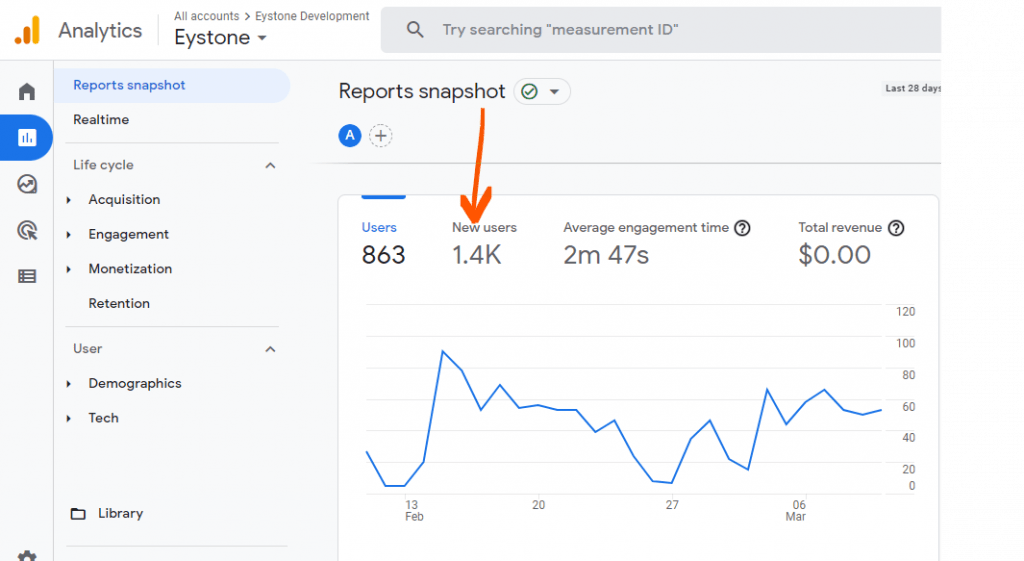
If you probably have heard about SEO and you don’t know what it means and how you can generate crazy qualified leads from it.
Like the one in the screenshot below:
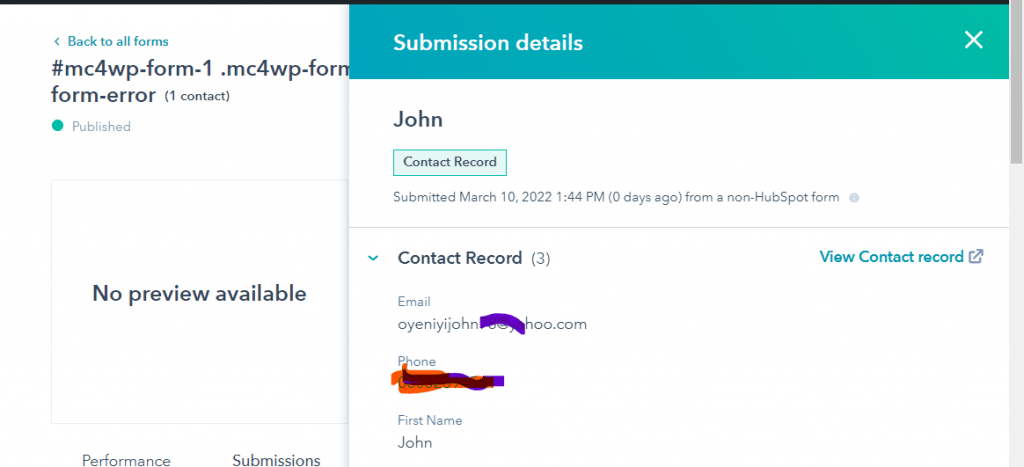
There’s one thing I will help you do, I’ll show you how to rank the first page of Google and start generating potential leads for your sales funnel.
In this post, I’ll show you exactly how to rank your real estate site on Google fast.
In fact, this is the exact process I’ve used to rank 1 on Google for search terms like “how to rank property on Google”.
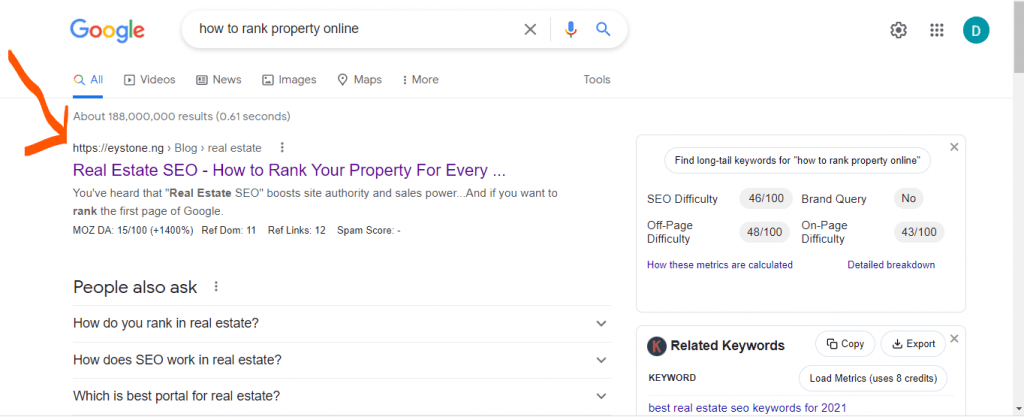
And position 7 for the keyword “land flipping business” in less than 2 days.
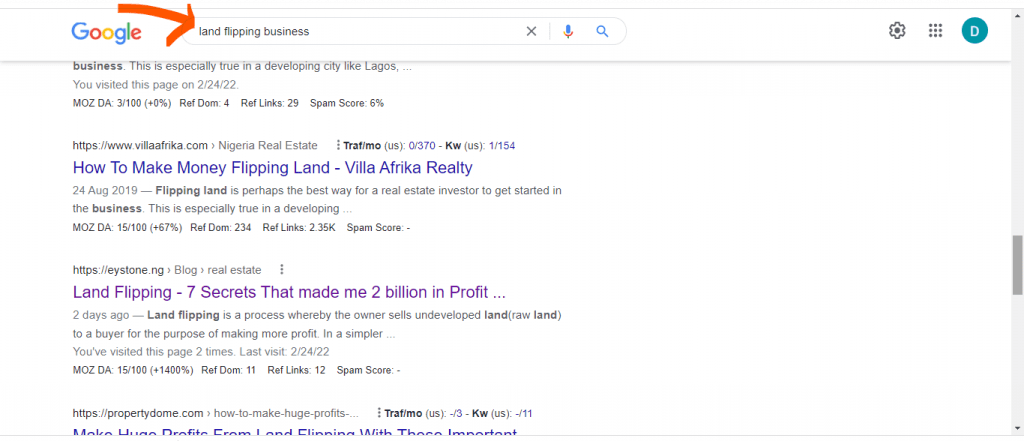
…And still counting.
So if you want to start ranking your property on Google’s first page, you’ll love this new guide.
Because everything you need is already detailed in this new real estate checklist.
If you want to see the benefit of SEO for your real estate website or business, follow these rules:
First,
Do SEO the way Google would love
In case you missed out on my last guide “real estate SEO”, click on the link and have a read.
Also, I’ve published a video that outlines pretty much everything that real estate agents need to know about real estate SEO.
Don’t worry, it’s simple and straightforward.
But what I’m about to share with you is the pathway to a level of growing sales, generating qualified leads, and limitless possibilities that are totally different than anything you see online right now.
I’m not bragging.
Because why I’ve used this technique to rank for over 900 keywords within a few days.

…And still counting
This same technique is what I deployed to get our real estate website included in Google news.

As you can see in the screenshot below:
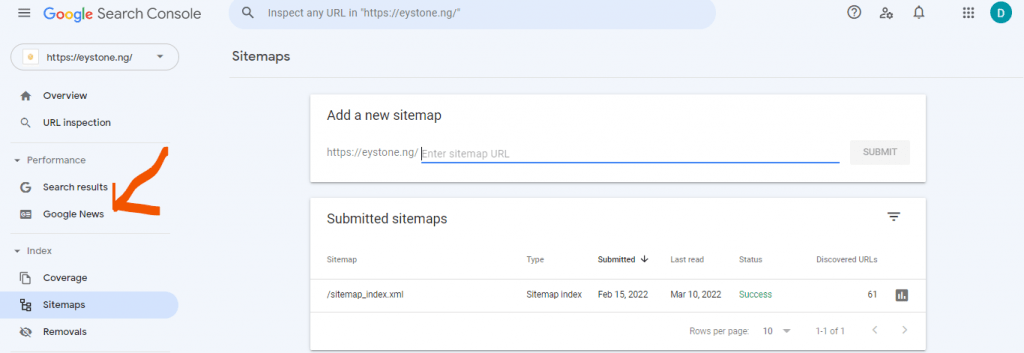
…And I think the first real estate company in Nigeria to achieve that.
And you can too.
I guess, there’s a big problem…for the reason, I’ll explain right now.
I’ve personally been greatly impacted by this, as will you.
That said, my strongest advice to you is if you don’t have a website, you can’t get along and compete very fast.
Probably you should get one.
The reason why is that you must be real and serious.
Also, if you want to become a driving force in the real estate industry, guarantee and prove it.
You’ve to build a formidable website that will help with your authority online.
Or you don’t get in and see your sales funnel sucks.
It’s either you chose which one.
It’s just that simple.
So, let’s get started…step by step
Improve on-site optimization for your real estate site
I’ve mentioned this same exact technique many times maybe you’ve probably wondered, why?
It’s just simple…
That’s because if you want to rank your site as a real estate agent or investor, you need to improve your basic SEO.
And that’s your on-page SEO.
Here’s the truth:
You can optimize your page within 10 minutes. And start to see your rankings skyrocket within days.
The question is:
How do you optimize your real estate site around your target keywords?
First, “what is a target keyword”
Here’s a simpler version,
A real estate target keyword is defined as the search term you optimize your content around to rank for on the search results.
Take, for instance.
Let’s say, I type a search query “best real estate SEO keywords”.
Doing this, here’s what you see below:
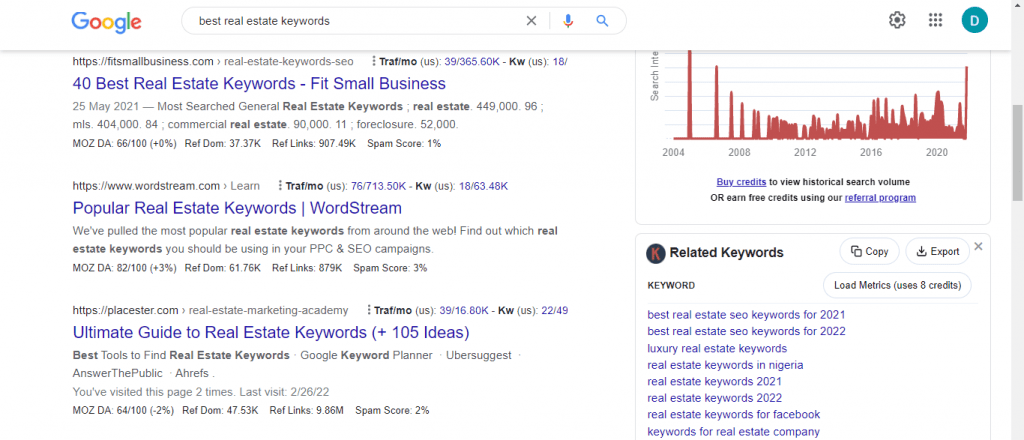
Google will show relevant results related to the exact search query. And that is as a result of on-page SEO.
Here’s how it works:
On-page SEO ranges from:
- Title tag
- Meta description
- LSI keywords
- Keyword density
- External links
- Internal links
- Url structure…and more
Title tag:
First, make sure that your target keyword moves toward the beginning of your title tag.
Experts recommend why it’s so important for higher rankings in Google.
According to spyfu,
A perfectly optimized SEO title balances the needs of search engines and searchers, making it both enticing to read and helpful for keyword rankings. When done right, SEO titles will help you achieve more visibility on the SERP, maximizing your number of clicks from search engines.
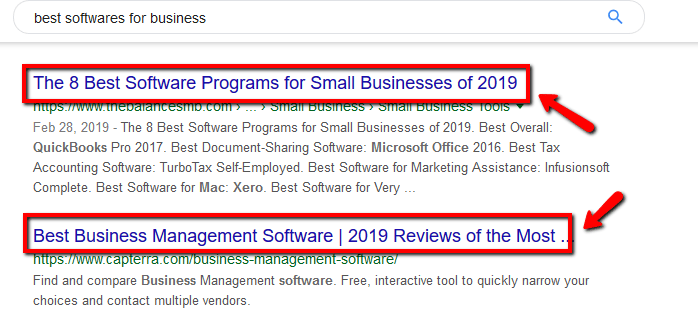
Here’s an example:
This is called “fast load” for your target keyword…It helps Google rank your content faster.
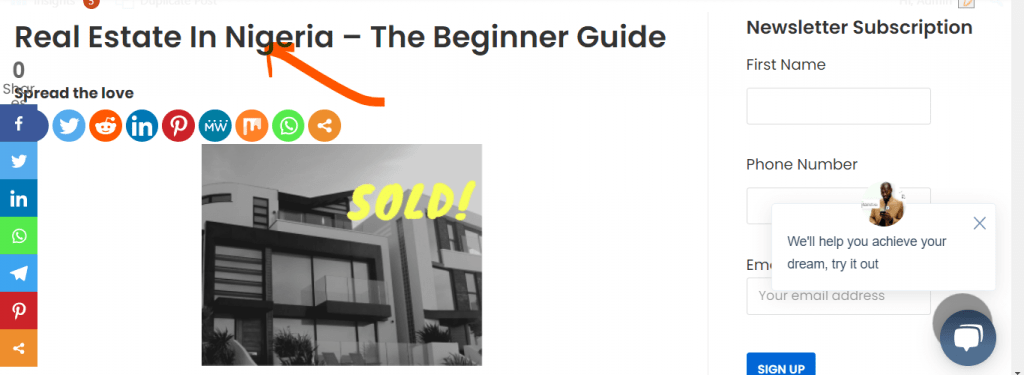
Because Google put slightly more emphasis on target keywords that show up at the beginning of the title tag.
And they put less emphasis on search terms that show up later on.
For example, my target search term is “real estate”
As you can see in the screenshot above, my target keyword kick-off at the beginning.
What about this, “real estate SEO”
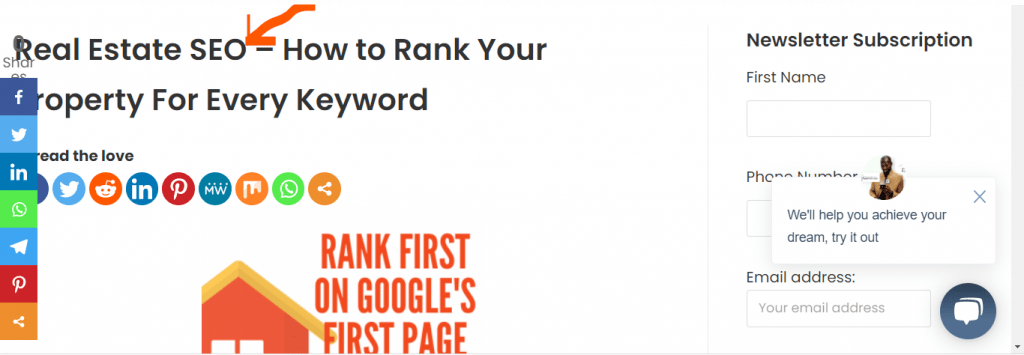
Meta description:
Our analysis found out that title tag and meta description that performs better generate 15x more click-through-rate than title tag and meta description that don’t.
Here’s what you should know:
According to Moz,
The meta description tag serves the function of advertising copy. It draws readers to a website from the SERP and this is a very visible and important part of search marketing. A page’s meta description should intelligently employ the page’s target keywords, in a natural, non-spammy way that compels the user to click through to the page. Google and other search engines often bold keywords from the user’s query in the description display, which draws the eye of the searcher.

Second, make your content at least 1,750 words long.
Why is this important?
Experts show analysis of Google’s key ranking factors and they found out that the average first-page result contains 1,447 words.
And I can tell that longer content tends to rank well in the search engine.
How did I know?
According to search engine land,
Back in 2012, serpIQ conducted a study involving more than 20,000 keywords. The results showed that the average content length of each of the top 10 results was more than 2,000 words. The average number of words for the content in the #1 spot was 2,416. For the #10 spot, the average number of words was 2,032.
That evidence is fairly conclusive. If you want your articles to rank well, consider using long-form content.
Take a look at the screenshot below:
For example, for the keyword “real estate SEO” it’s over 2,600 words count because I know this keyword is super competitive.
I knew well, I’m competing with giant sites like stanventures, even search engine journals with high domain authority.
This is why I make sure my page covered everything concerning the keyword ‘real estate SEO” than any real estate checklists online.
Everything that a real estate agent, realtor, or real estate investor needs to know about optimizing their real estate site for higher rankings in Google is fully detailed in that guide.
Like I said, my guide is over 2,600 words count.
But, this is the most interesting part:
If you look at the search console below:
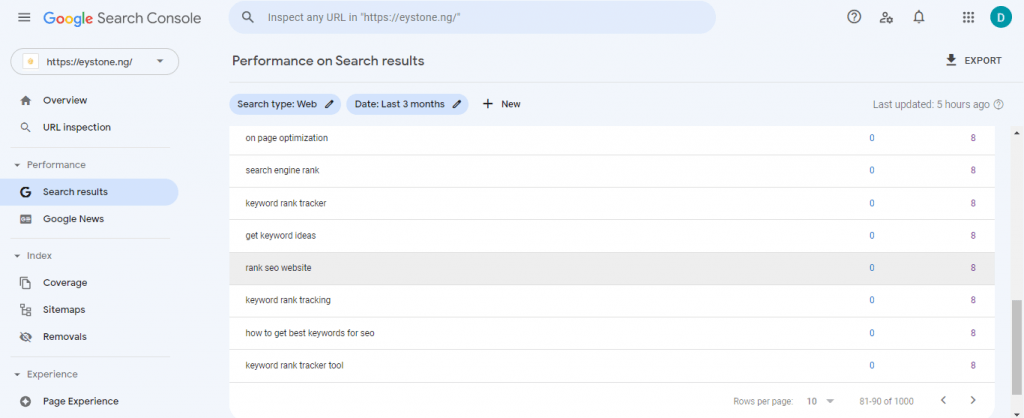
This same exact guide “real estate SEO” ranks for over 100 keywords and still counting.
Of course, there are times when longer form content doesn’t perform too well.
But if you can churn out high-quality long content, you should do well on Google.
Thirdly, add keyword density:
This is how it works:
If your main keyword is “schema for real estate agent”
Make sure that the same exact keyword “schema for real estate agent” appears at least 15 times on your page.
Here’s an example in the screenshot below:
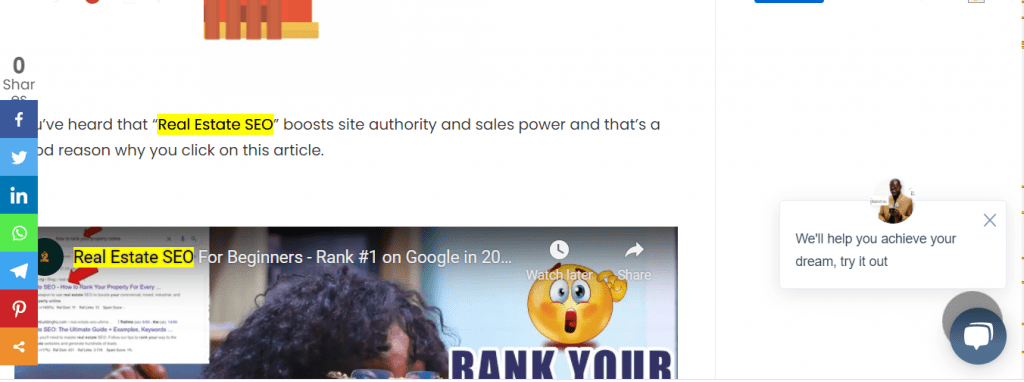
This isn’t about keyword stuffing but it will make your content perform well in the search engine.
And why is this important for rankings?
According to Wordstream,
As we mentioned earlier, there are no hard and fast rules about keyword density. To complicate matters further, keyword density can and should change depending on the nature of the content in question; a timely, syndicated news article, for example, may need significantly fewer keywords to rank higher than an older evergreen blog post.
Many SEOs recommend including one keyword per roughly 200 words of copy. In other words, if a webpage consists of a single, 200-word paragraph, it should contain no more than one keyword.
This is it.
When you add relevant target keywords naturally on your page, you tell Google.
This page is about this search term.
Which can help you get a fair dice in rankings boost.
Here’s an example:
If you see the guide in the screenshot above, you will see that I add the main keywords naturally to the body of the post without it looking as if I’m spamming it.
So I squeeze that term a handful of time on my body text where it looks relevant.
This is what Google will see and improve your rankings even helping you to rank for search terms you never optimize or think you would rank for.
This leads us to this:
Rank fast with search intent keywords
How do search intent keywords work?
What’s it and why does this matter?
Here’s an example:
Let’s say, I type a search term on Google “SEO for real estate agents”
Here’s what you will see below:
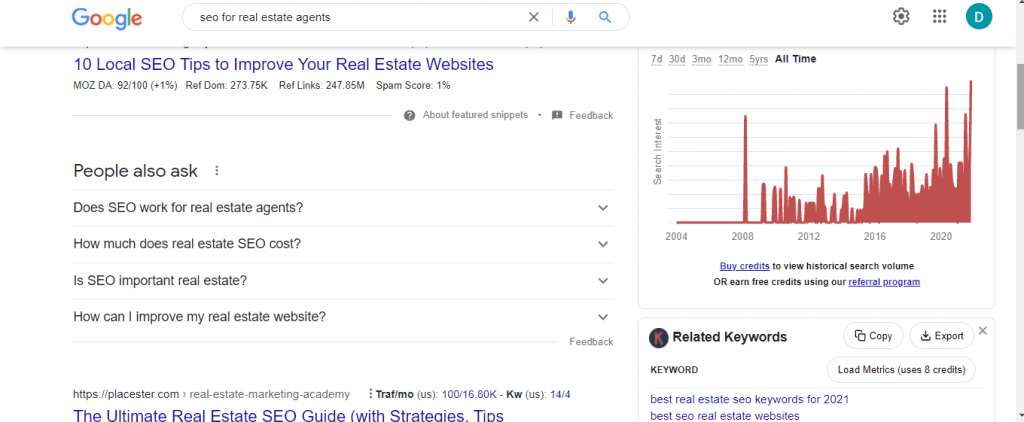
Now, take a look at every website ranking for the search term.
You will notice that majority of their title tag resonate well with the search query.
This is super helpful if you want to dominate the search result lists fast.
For some reason, Google will try to figure out if your site is an exact fit for the specific terms.
Because search intent is the new game-changer in the world of SEO right now.
And how did I know?
Why Is Search Intent Important?
Take, backlinko, here’s what brian dean said:
Simply put: satisfying Search Intent is ultimately Google’s #1 goal.
So if you want to succeed with SEO and content marketing today, Search Intent needs to be a big part of your approach.
In fact, Google’s most recent edition of their Quality Rater Guidelines is obsessed with Search Intent.
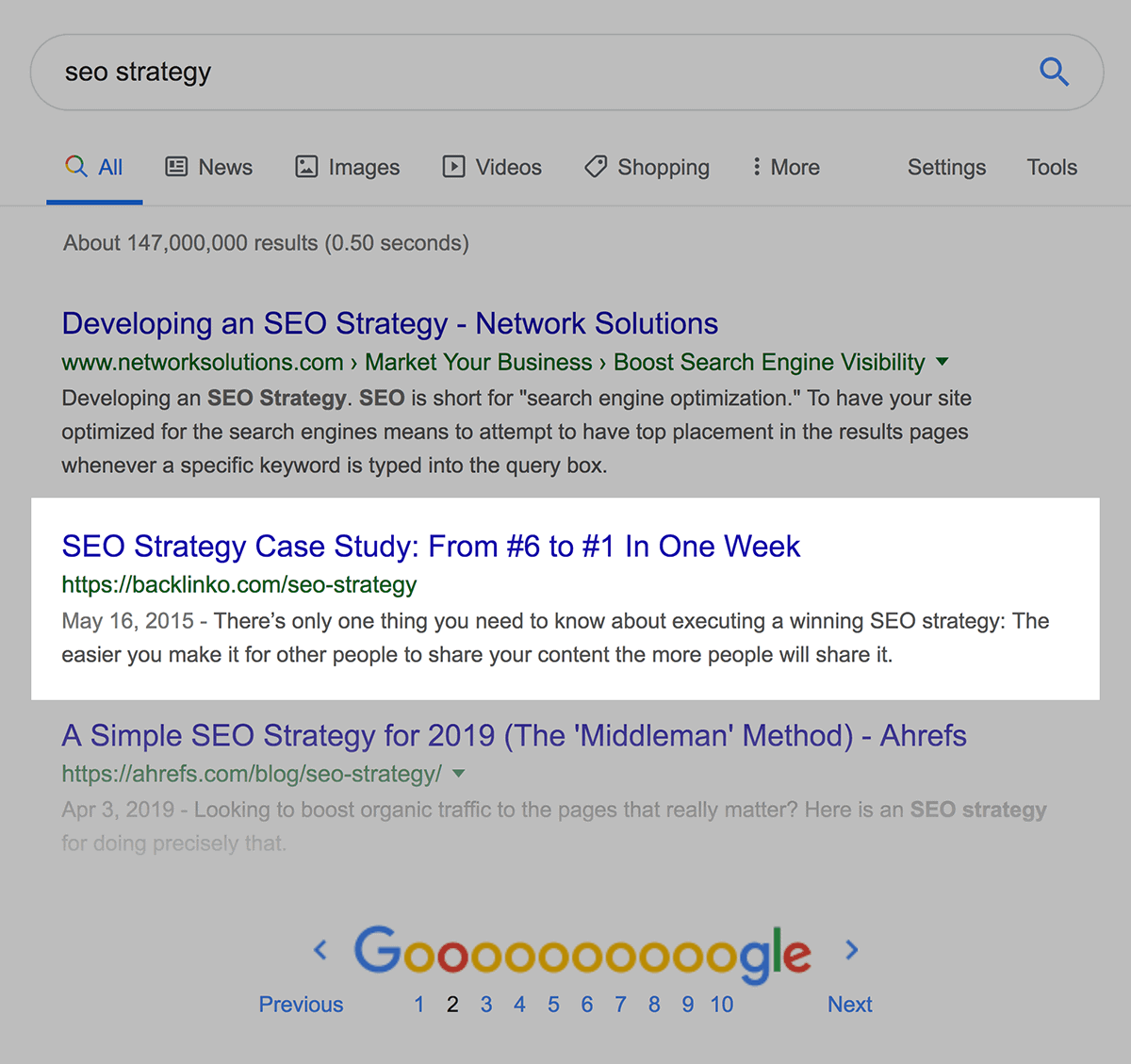
Here’s it.
If you can write quality content that people would love and you see tons of click-through-rate. Google will begin to pay attention to your website and if people love what they see or spend a good time on your site and finally get what they’re looking for from your page.
You can expect a sudden surge in rankings because you will do well.
If the reverse is the case, Google will drop your site like a dead stone.
The absolute weapon for this technique is to make sure your page gives searchers exactly what they want to read and know.
Let me explain better:
A few weeks ago, I wanted to rank for “land flipping business” and I knew well this is a competitive keyword.

So I spent two days working on this guide.
Within a few hours, after publishing this guide. It ranks straight to the first page of Google.
Because Google figured out that most content ranking for this search term is outdated.
As you can see in the screenshot below, some were published 3 years ago. And I realized this because Google made more emphasis on the freshness of content.
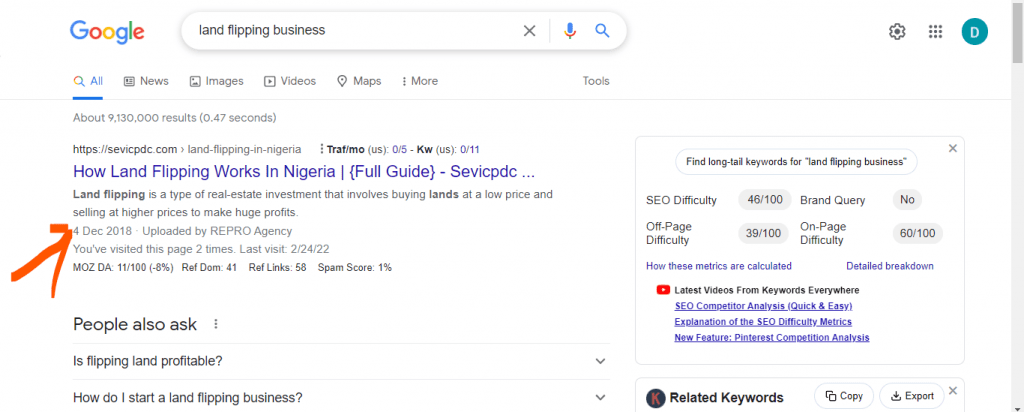
Fresh content tends to perform well and fast if it’s in-depth and detailed.
The most interesting thing is that I was able to realize that most pages ranking on the very first page of Google are not written for humans, but for search engines.
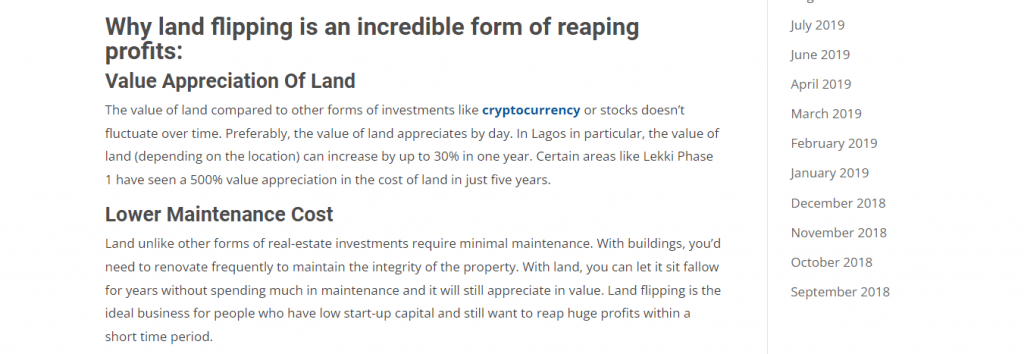
For this reason, I change the guide into a storytelling post.
But, there’s one problem, which is, Google figured out that this content is fresh to rank for a competitive term like that.
For this reason, the organic position of that page drops slowly, now it’s in position 14 in the search results.
Just for one reason, the content is still fresh.
If you want to rank well on Google, your page needs to be a good fit for the searchers.
You’ve to make it resonate with what someone is searching for.
That’s why helping Google to see your real estate site as an authoritative one in your niche is the foundation of any good SEO strategy.
Reduce your bounce rate and pogo-sticking
You’ve heard that bounce rates can affect your overall rankings.
Therefore, avoid pogo-sticking.
So, what is pogo-sticking?
This is just a generic term used when a searcher clicks on your page on the search result list and bounces immediately to the search results.
What is the difference between pogo-sticking and bounce rate?
According to ahref, here’s what they said:
- Pogo-sticking, as defined in the intro, is when a user enters a site from a search engine results page and quickly leaves it to go back to the SERP.
- Bounce rate is when a user enters a site from any source and doesn’t perform any action on it (e.g., clicking a link, filling a form, or putting an item in a cart). So if someone opens this article reads it entirely and doesn’t do anything else before leaving—that counts as a bounce.
Why does this matter?
One thing Google doesn’t like to see is when a searcher clicks to your landing page, therefore, bounce back immediately to the search results.
This is a super clear sign to Google that searchers don’t like your page.
And if end users are not happy with your site, you can kick off your rankings out of the search result lists forever.
And it doesn’t sound good enough.
The question is:
- Can pogo-sticking be avoided?
Of course, yes.
If you’re giving a searcher what they are searching for, why would they bounce?
Besides ranking high. There’re helpful ways you can increase your site dwell time and reduce bounce rate and pogo-sticking.
#1 – User experience, you’ve to learn how to structure your page so it’s easy for potential buyers to find what they’re looking for.
Also, when a post or product page, always remember to add visuals, videos, and screenshots to your page so it’s easy for your users to engage with your content.
Not just that, it also makes your content more compelling and easier to understand.
If you look at this post you’re reading now, I’ve over 8 visuals embedded for easy readability and understanding of the content.
And this help keep my dwell time high and bounce rate and pogo-sticking relatively low
#2 – let your site be mobile-friendly:
Google laid more emphasis on mobile-friendly sites.
According to Weblite,
Mobile-friendly websites boost your sales and conversions because there is an ease of accessibility that surrounds this website design. Knowing that a website is mobile-friendly allows users to interact and engage with your brand across devices, without being annoyed or inconvenienced. This increased accessibility is key to creating long-term loyalty and customer creation, so it is crucial to invest in it early on.
This takes us to the next one.
Optimize for several other keywords
To get more traffic to your product page or blog post, you’ve to optimize for several other related keywords.
And the easiest way to do that is to use the search engine space.
Let’s say you want to rank for the keyword “real estate agent”.
Just plug in that exact query on the search space.
Then Google will start to show up related search keywords for the exact term.
Another easiest way you can go about this is when you visit Google search console.
Here’s what to do next:
When I scan through the queries that I started ranking for.
You’ve probably noticed I’m getting a little bit of traffic and impression from people searching for ‘land to buy” “land for sale” and more.

But I don’t have a page optimized around that exact term.
Instead, people searching for that term are seeing the page “To parents who buy a property”.
But it’s not super optimized around that term.
So what I did next is that I create a new checklist guide that talked about ‘how to buy a good land for sale’
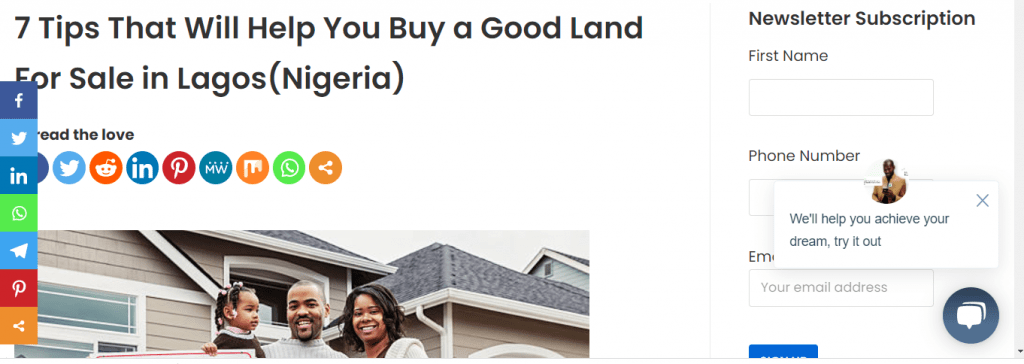
For this reason, I’ve positioned that article to rank better for that term.
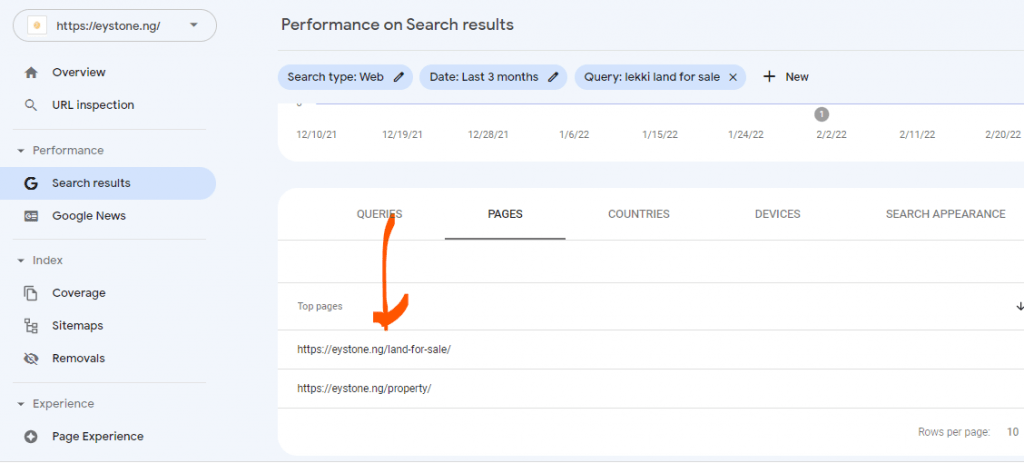
The fact is, you can gain additional queries that you are not optimizing for, you can get a little bit of traffic but it’s best advisable to create a new checklist for the entire keyword.
Or still, re-optimize the body text for those terms.
This will help you generate more traffic over time.
Identify your real estate market online
If you can identify your marketplace online that might just be the miracle that would launch you like a space rocket.
That’s right.
Because it will increase the chances of your online success.
How do I know?
Let’s look at how other real estate markets started.
First, I have a favorite, Zillow how do you think they make tons of money finding clients and targeting their product in front of them?
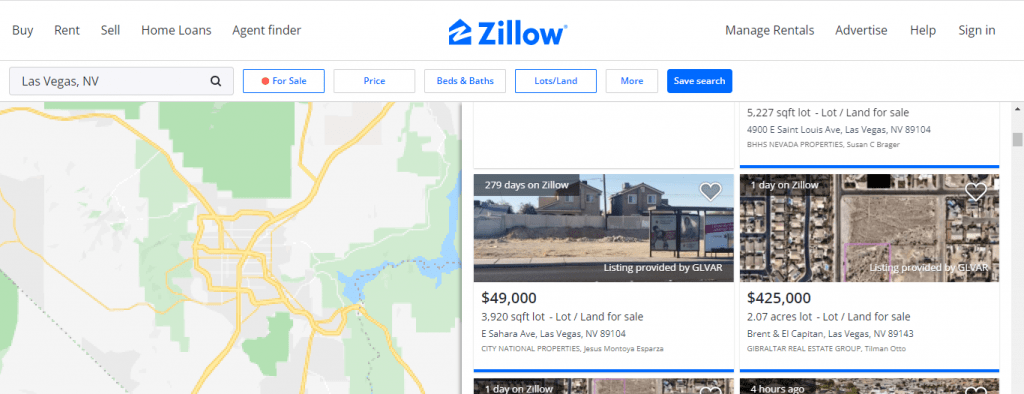
These products are not what you can buy straight away I mean they are products that involve a lot of money.
Tens of millions of dollars, yet they pretty much sell well.
The majority of them come from advertisements, spending big on paid ads to target local buyers, and more.
In fact, you might think all these marketing techniques bring a majority of their sales but I’ll say it’s a fact lie.
Because they generate most of their traffic from SEO.
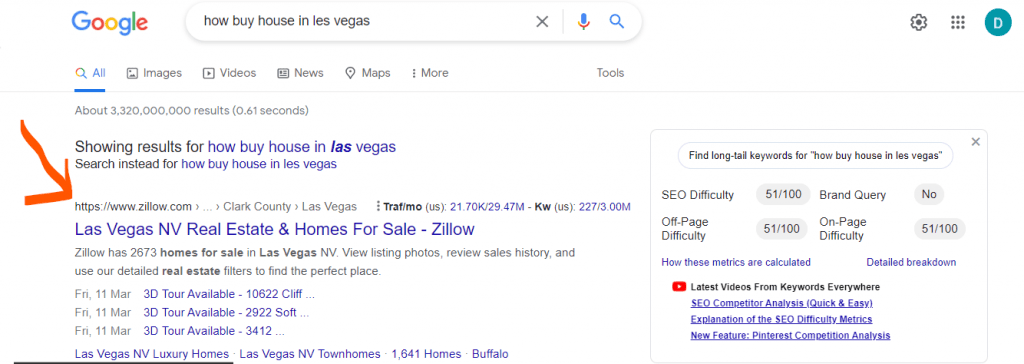
Here’s a bigger shock:
According to listwithclever
Zillow monetizes this traffic with ad revenue for third-party services (home builders, mortgage lenders, etc.) and selling buyer and seller leads to Premier Agents. Essentially, its goal is to turn website visitors into revenue which can misalign Zillow’s and buyers’ and sellers’ interests.
For example, Zillow generates revenue through Premier Agents. Since agents pay to advertise their services, the options buyers and sellers see are based on how many local agents pay Zillow — not the agent’s performance record or ability to help you during a real estate transaction.
Take a look at the search engine:
Or what about the Nigeriapropertycentre?
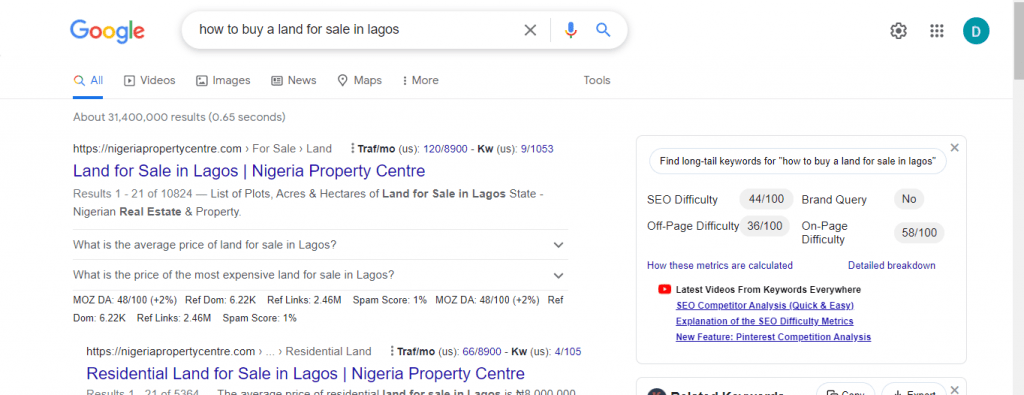
These guys spend on paid ads but they leverage SEO to drive qualified searchers.
And they generate millions of free traffic with SEO monthly.
Tell me, how would you want to compete with them in sales and conversions when you are not leveraging SEO?
Conclusion
Now that you know how to go about doing SEO with your real estate website.
Simply don’t forget to share it and subscribe with us.
We’ll be looking forward to working with you.
